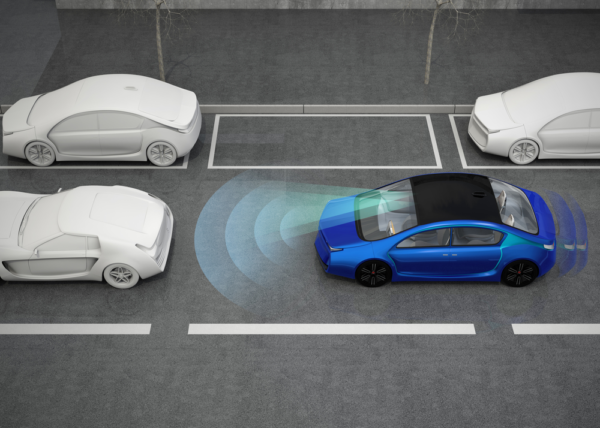
Since the launch of Tesla’s cars with autonomous driving features, the automotive industry has invested a great deal of resources into R&D for autonomous vehicles. Today, many cars are equipped with at least some autonomous features. However, what does the future hold for self-driving cars, and how can your business play a part in that developing future? Consider some of the industry’s trends and expert projections for autonomous vehicles.
The Future of Autonomous Vehicles
Current Autonomous Technology Will Continue to Proliferate
SAE International developed a 5-level classification system for self-driving technology. Today, many cars are equipped with basic level 1 features, like automatic braking to prevent a rear-end collision. Level 2 capabilities, for instance automated highway driving with lane keeping, have also become more common in many high-end vehicles. Expect these features to become standard features on cars within the next decade.
In fact, the United States is considering making level 1 safety features like automatic braking a mandatory requirement for new vehicles. Although it’s estimated that around 90% of new vehicles sold have these features, governments will look to standardize their performance and ensure they are available on all cars. This means increased demand for sensors and their accompanying components like housings and wiring harnesses.
Full Self Driving Capabilities
Despite Tesla labeling their autonomous capabilities as “Full Self Driving”, they have yet to actually achieve the level 3 SAE standard for that title. However, full self-driving is on the horizon. Currently, most cars with high level 2 features can navigate some highways independently but have yet to be able to navigate a full commute from home to the workplace. Nevertheless, this is the current goal for most manufacturers in the automotive industry.
As automotive companies collect more data from experimental autonomous vehicles, they’ll develop better AI models that dictate the car’s behavior on the streets. Digital testing systems are being used to simulate driving experiences and thus accrue more hours of practice in a shorter time span. While Tesla has positioned itself as a pioneer of the technology, other companies are reluctant due to safety concerns. Companies that can demonstrate safety through real-world and digital testing will have an advantage going forward.
Driverless Navigation
Level 4 technology is at least a decade away from government approval and likely still another decade from mass adoption. However, when it arrives, it will be a paradigm shift for the industry and vehicle ownership as a whole. Interestingly, automotive companies have put level 4 autonomy on the back burner, with companies like Ford shifting R&D resources away from autonomous vehicles and more into EVs in the short term. If major manufacturers are holding back, who is paving the way?
Transportation service companies have lots to gain from level 4 autonomy. Uber, for instance, has been testing driverless taxis in cities such as Pittsburgh and Phoenix. Similarly, delivery services could significantly increase margins by removing the driver. Self-driving trucks have the potential to improve cargo delivery times and greatly reduce delivery costs. If you’re looking to supply autonomous vehicle manufacturers, focus on the truck segment.
Changes to Vehicle Design
When we reach level 4 autonomy, vehicle designs will likely change dramatically. Would a steering wheel be necessary in a driverless vehicle? Perhaps car interiors will have rows that face one another, or more limousine-like designs with benches along the sides to maximize passenger space. With less space required for driving instruments, more space could be dedicated to luxury and comfort features.
Although every business needs to ensure short-term profits, it’s wise to consider how these design changes could impact your company down the road. A company that makes shift knobs might want to start diversifying now because it won’t be long before that component is entirely unnecessary.
Vehicle-to-Vehicle Connectivity and Communication
The apex of self-driving vehicles will come when one autonomous vehicle can communicate with another and coordinate actions. Organizations like the C2C-CC are already trying to align efforts within the automotive industry to support these features. Widespread vehicle-to-vehicle (V2V) technology would allow for a radical change in how we approach urban design and traffic regulation. Cars could drive faster and traffic jams would be avoided as computers wouldn’t make the poor driving decisions that humans do.
Obstacles to Overcome for the Automotive Industry
To reach the utopian level 5 future that many envision, there are still several problems to solve along the way. Some of these issues will be settled by governments and regulators. Others will need to be addressed by manufacturers and their suppliers.
Liability Concerns
Who is responsible when there is an accident involving a self-driving car? This question has plagued many companies and continues to be the reason that some hesitate to enter the autonomous vehicle market. Is the manufacturer to blame? What if they relied on third-party software? Does the software developer then bear some responsibility? Would a supplier be held accountable if faulty parts led to a series of accidents? These questions still loom large.
Supply Chain Issues
Autonomous vehicles will upset the supply chain as some components will be made redundant, while others will be needed in large quantities. Sensors, cameras, wiring, and computer chips will only become more vital to the automotive supply chain going forward. As most projections assume that autonomous vehicles will also be electric vehicles, more charging infrastructure and electric powertrain components will be essential.
Companies should take note of these supply chain trends and look to secure reliable sources of materials now. Building supply relationships today will strengthen capacity in the future. Suppliers should look towards the future to determine whether their current business model will remain viable in the long term.
Contact SAAB RDS to learn how we can help your company digitize and prepare for the future of automotive manufacturing.
